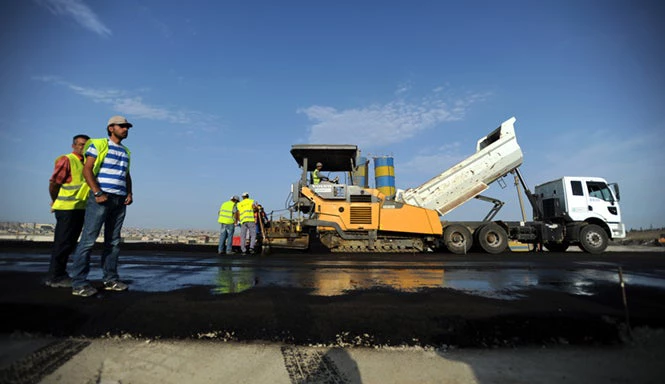
Around the world, roads remain the dominant mode of transport and are among the most heavily-used types of infrastructure, accounting for about 80% of the distance travelled for individuals and 50% for goods.
Despite this intensive use, the funding available for road maintenance has been inadequate, leaving roads in many countries unsafe and unfit for purpose.
To make matters worse, roads are also very vulnerable to climate and disaster risk: when El Niño hit Peru in 2017, the related flooding damaged about 18% of the Peruvian road network in just one month.
It is no surprise then that roads are the sector that will require the most financing. In fact, the G20 estimates that roads account for more than half of the $15 trillion investment gap in infrastructure through 2040.
Yet, in the developing world, private investors have been less active in roads than in other areas. There have been three times more Public-Private Partnerships (PPPs) in the power sector than in transport. Even when private money does go to transport projects, ports and airports typically claim most of investment. Private investment in roads, on the other hand, has been declining to a 10-year low, and continues to be highly concentrated in middle-income countries. In fact, low-income countries concentrate less than 1 % of all road projects with private participation.
Increasing private participation in the roads sector through PPPs could not only benefit governments and citizens, but also open up sizeable investment opportunities for private investors.
So why are we not seeing more private investment in roads in low income countries?
What are the constraints to greater private investment in resilient and safe roads?
- High-volume roads only make up 1-2% of the overall road network, limiting the number of assets that could be financially sustainable from tolls alone and leaving strapped governments with a bill they cannot pay;
- Increasing tolling or fuel taxes is thus necessary but may be difficult due to political considerations;
- Traffic forecasts are hard to get right and are often biased, making it tough to transfer demand risk. The risk of getting paid by thousands of drivers is harder to manage than the risk of getting paid by a single project user (as compared, for instance, with private power projects receiving payments from one utility);
- Operating a road corridor can be a complex and financially risky business. While most private contractors feel comfortable building roads, they may not have the capacity or willingness to operate them;
- In some instances, contractors have exercised pressure to maintain the traditional way of contracting and to limit the entry of new investors;
- Most governments may not have the technical expertise to prepare and manage road projects with private participation, which are more complex than traditional contracting;
- Governments operate with limited capacity and short electoral cycles. This makes it hard to develop the kind of larger-scale road programs that attract private investors;
- Road projects pose high environmental and social risks related to land acquisition and community disruptions.
Given their potential to catalyze economic growth and connect people to opportunities, safe and resilient roads are essential to development. The WBG’s Maximizing Finance for Development (MFD) approach, which aims to leverage private sector solutions, can help countries close the investment gap in roads.
This requires changes to the way the Bank, governments, and other development partners have been handling road projects:
- Using public capital for de-risking projects: The WBG is increasingly using guarantees and applying its capital to mitigate key risks in road PPPs and make them more attractive to private investors. Projects using WB guarantees are currently under evaluation in two African countries.
- Going upstream and focusing on high-priority roads: The WBG is working with governments in low-income countries to identify good quality road projects and bring them to market. The bulk of investment needs involve rehabilitating or widening existing roads, which is usually easier, faster, and less risky than implementing a project for an entirely new road.
- Scaling asphalt: Instead of smaller rehabilitation and maintenance contracts for isolated road segments, it might be better to increase project size, bundling road upgrading projects with maintenance into larger PPPs (including financing), and to launch various projects at the same time to reduce transaction costs and maximize development benefits. The WBG could support such scaling efforts by helping governments identify and prepare projects, standardizing and improving the bankability of contracts, and providing de-risking and financing products. This approach has already been applied successfully in the solar sector and with the 4G road program in Colombia.
- Including key services in contracts: as part of our commitment to building sustainable roads, the WBG is also considering how to retrofit traditional PPPs to incorporate climate resilience and safety services.
- Increasing funding to mobilize more private finance: To get more private finance, governments need to make better use of user charges, levying tolls when there is willingness to pay, using new technologies and improving resource management.


Join the Conversation